U.S. CUSTOMERS: Tariffs are included in the product prices until the situation changes. Click here for more info.
U.S. CUSTOMERS: Tariffs are included in the product prices until the situation changes. Click here for more info.

A complete guide to Frankincense resins
by Dan Riegler December 04, 2023 9 min read 1 Comment
A complete guide to Frankincense resins
by Dan Riegler

The classic Frankincense types.
The 4 classic Frankincense types are found in the shape of tears, and they come respectively from either Oman, Ethiopia, Somalia/Somaliland or India. In the dry season, the tree’s bark is removed in small 3″ to 6″ sections, and the milky exudate flows and solidifies in opaque drops and tears. It is collected after 2-3 weeks when it has hardened. These four primary types of Frankincense are the most common and familiar and they differ enough for a beginner to discern between them. With a little guidance...

Frankincense Serrata-India
Frankincense Serrata grows in India, and its aroma is most familiar to those who grew up on the Indian continent and Asia. It is the Frankincense type most often used in Hindu ceremonies and Ayurvedic medicine. It has a distinct sweet, spicy aroma with notes of anise and mint.

Learn more about Frankincense Serrata in the shop here
Frankincense Papyrifera-Ethiopia
Growing in the Tigray area of northern Ethiopia, Eritrea and west into Sudan, Boswellia papyrifera is used by churches worldwide and is often called Church Frankincense. Frankincense Papyrifera has a strong middle note, a soft yet persistent heart note, and a distinguished aroma with hints of orange peel. It brings to my mind the smell of ancient stone temples and churches. Shown in the photo below is our Sudan Supergrade Frankincense Papyrifera
Frankincense Papyrifera in the shop here
Frankincense Carterii, (Somalia),and Frankincense Sacra, (Oman).
Though botanists agree these two are the same species of tree, the nose tells us they are quite different and distinct types of Frankincense resin.
Frankincense Carterii-Somalia
Frankincense carterii is likely the best known Frankincense in the West, and the population of Boswellia carterii trees in Somalia and Somaliland is the largest frankincense “forest” in the world. It provides most of our Frankincense and the main yearly income for many Somali families and communities. When we smell an essential oil of Frankincense, it is most often that of Frankincense carterii. Frankincense Carterii has a deep, soft amber note with highlights of honey, vanilla and black pepper. It has softer citrus notes than Frankincense Sacra and Dalzielii.
 Frankincense Sacra and Royal Hojari
Frankincense Sacra and Royal Hojari
Best known in Arabian cultures, Frankincense Sacra grows throughout the Southern part of the Arabian peninsula from Aden through Oman. It is divided into two types: regular Frankincense Sacra resin and the Hojari type. The Hojari Frankincense Sacra resin comes from the mountainous region of Dhofar in Southern Oman and is extensively sorted according to the tears' colour, size and shape. It has a sweeter and bolder fragrance than the regular sacra, with distinct amber and strong citrus notes that Frankincense Carterii lacks. The term “Royal” is added to the larger, better-formed tears. The main Hojari types are silver, red and green Hojari, which is usually called “Royal Green Hojari” because it has a light green cast. The Royal Green Hojari is considered the premier Omani Frankincense and is often reserved in Arabian culture for medicinal applications.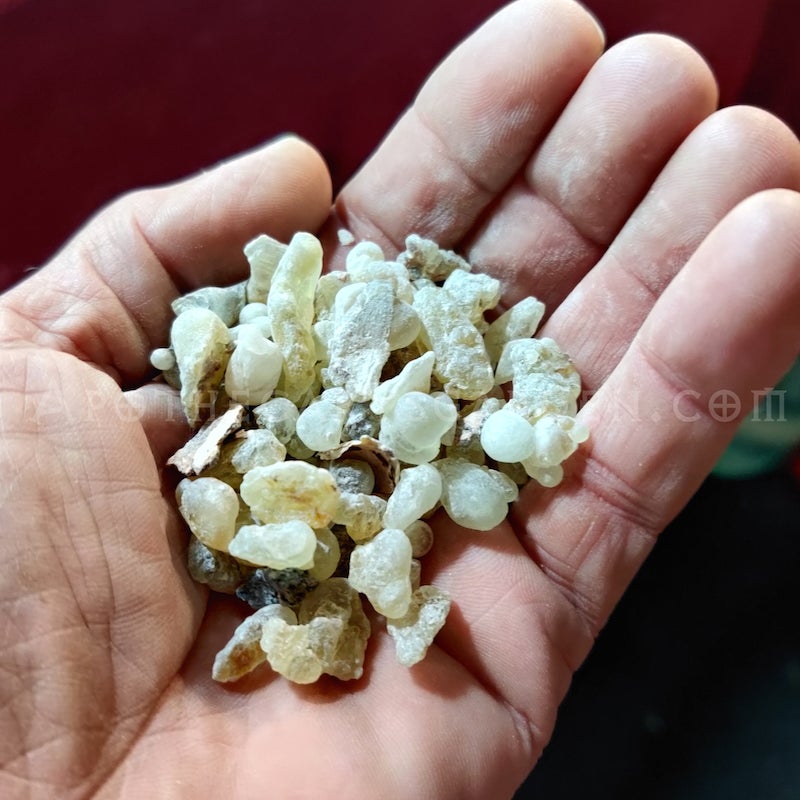

Frankincense Sacra-Royal Green Hojari-Here in the shop
The above 4 types of Frankincense resin are a great starting point for beginners. They differ quite a bit in their aroma, and they are the main Frankincense resins traded on the international market so they are easy to find. Once any of these have been experienced, you will have an excellent base for appreciating and evaluating the rest of the Frankincense resin family.
Black Sacra and Black Carterii
Both Frankincense Sacra and Carterii are available in what is called their black form. The term is a bit misleading since they are not really black but a very dark honey colour. Black Sacra and black Carterii are forms of Frankincense that often appear in sticky masses peppered with tears and bark. Distillers favour them due to their high essential oil content. Their sticky form is generally attributed to the abundance of rainfall and moist ocean breezes they are exposed to due to their geographical locations. Both have a sweeter, softer (honey-like) aroma with less pronounced citrus notes than their counterparts.

Frankincense Dalzielii-Nigeria and West Africa
Frankincense Dalzielii is a beautiful Frankincense resin that is not as common as the others. From a visual perspective, it looks like Frankincense Sacra Royal Hojari, with large, well-formed tears. The main difference between Sacra/Hojari and Dalzielii is in their fragrance. Besides citrus notes, Boswellia dalzielii has distinct mint and camphor notes. The latest research has shown that Boswellia dalzielii contains the highest % of therapeutic Boswellic acids and AKBA compared to all the other types.

Frankincense Frereana-Maydi. The king of Frankincense
Locally called Maydi, Boswellia Frereana is the pride of Somali culture. It has a very different chemical composition from the other types of Frankincense, contains no Boswellic acids, but is just as powerful a healing and anti-inflammatory resin as the others. It is the preferred Frankincense type of the Coptic church and is used extensively in Arabia as a high-end natural chewing gum, incense, and cosmetics base. Sometimes referred to as the king of Frankincense and Yemenite chewing gum, it often appears as flattish chunks of tears of a golden colour with a light white surface bloom. There is a theory that the unique golden coloured Frankincense Frereana was the “Gold” referred to in the Biblical story of the birth of Jesus. Frankincense Frereana has a unique dry yet sweet "Honey and spice" aroma.

Frankincense Rivae, Neglecta and Kenyan Frankincense.
These Frankincense types differ considerably in appearance from all the others. They are black-coloured exudates, often with a granular texture that appear as lumps with no distinct tears. Believe it or not, these three trees produce 2-3 different types/colours of resin! One is clear and used locally as chewing gum. All 3 of these trees provide income for semi-nomadic pastoralist tribes and create an income for the tribe’s women.
A sustainable harvest
These 3 Frankincense species trees are unique in that they offer us their resins without tapping! This makes their resins completely sustainable. This is a great benefit since we are losing many of our other Frankincense species due to increased demand for their essential oils and subsequent overharvesting. If we can use these types of Frankincense more often, it will benefit the collector communities and take some of the pressure off the other over-harvested and stressed tree populations.

Samburu women bringing their Frankincense and Myrrh resins to the village market in Northern Kenya
Frankincense Rivae
Also known as Ogden Frankincense, Boswellia Rivae is one of my favourite Frankincense types. It grows only in the Somali Region of Ethiopia and has a lovely, candy-sweet, and spicy aroma. The tree yields 2-3 different types/colours of resin, but the black is most often found in commerce.
Frankincense Neglecta
Frankincense Neglecta is often soft, pliable and almost tar-like when fresh and forms large lumps in the collector's bags due to the desert heat. It has less sweetness than Frankincense Rivae and has notes of Balsam Fir. Frankincense Neglecta grows mainly in Kenya and Western Ethiopia. I prepare an oil extract from Frankincense Neglecta resin to address anxiety and tightness of the chest.
 You can learn more about Frankincense neglecta from the Samburu tribe here
You can learn more about Frankincense neglecta from the Samburu tribe here
Commiphora confusa-(Kenyan Frankincense)
As implied by the species name, this resin causes a lot of confusion since it is actually a member of the Myrrh family and not a Frankincense. However, its aromatic profile and chemical composition are much closer to Frankincense than Myrrh. For this reason, it is named Kenyan Frankincense. In the past, C. Confusa was mixed in with Frankincense Neglecta resin by collectors since they look similar. However, now that it has been identified as a unique aromatic resin, one can find it and its resin and essential oil in the international market, As indicated by its name, Kenyan Frankincense grows mainly in Northern Kenya.
 White, (Thurimel), Commiphora confusa-Kenya-Kenyan Frankincense in the shop
White, (Thurimel), Commiphora confusa-Kenya-Kenyan Frankincense in the shop
The Exotics
There are a number of Frankincense resin types that are rarely found on the market. Most are sourced from the island of Socotra. They are Boswellia Ameero, B. Socratana and B. Elongata. We will leave these for the experts and collectors of the rare and unusual.
The Thurimels or Honey Frankincense types
As I mentioned earlier, some Frankincense trees produce more than one resin type. The Black Frankincense types, Boswellia neglecta, Rivae and Commiphora confusa, also produce a clear aromatic resin. I have dubbed this aromatic exudate a “Thurimel”, which means Honey Frankincense. Though rarely traded internationally, the Honey frankincense types are valued locally as chewing gum and incense. They all differ in aroma from their black counterparts and are pure resins lacking water-soluble gum. They melt completely when heated and produce a sweet aroma when burned as incense. Every once in a while, I have them for sale in the shop. These types of Frankincense dissolve easily in warm oils for making therapeutic and cosmetic oils, serums, salves and cremes. They all contain the Boswellic acids.
Boswellia Occulta. The hidden Frankincense
Only recently identified and named, Boswellia Occulta grows among the Frankincense Carterii trees in Somalia and Somaliland. It was found mixed in with Boswellia carterii resin to add a bit of extra income for collectors. It has an odd aroma compared to other Frankincense types and a bitterness that may be attributed to boswellic acids. It’s chemical composition is different from Frankincense Carterii and it contains a high % of a compound rarely found in nature-Methoxydecane. Boswellia occulta has only recently been introduced to the Western market as a distinct resin. Frankincense Occulta essential oil has a surprisingly sweet and rich aroma
The folly of Frankincense essential oil
Most people don’t know that the essential oil of Frankincense contains only a minute portion of the therapeutic compounds found in Frankincense resin. The majority of the healing compounds are discarded after distillation of the resin as waste!! Out of 1 kilogram, (2 Pounds), of Frankincense resin we can expect to receive about 5% by weight, about 1.5 Ounces of Frankincense essential oil. The rest is lost. Is this a judicious use of our natural resources?
Wasteful and shortsighted
Our enormous (and growing), demand for essential oils is stressing the trees beyond their ability to regenerate and contributing to the decline and immanent extinction of some Frankincense species. Frankincense resin offers us so much more than just an essential oil. All the resin acids, including the Boswellic acids, the active therapeutic compounds that are anti-inflammatory and anti-cancer, are discarded since big money nowadays is in essential oils.
Why pay more to get less?
I encourage you all to use the whole resin instead of Frankincense essential oil whenever possible. Frankincense resin is infinitely more beneficial than the essential oil and in many cases can replace the essential oil and improve most products we make. Up your game. Don’t be lame. When I make products using whole resin or the resin extract, essential oils are unnecessary. The whole resin comes with its perfect proportion of fragrance and essential oil.
Make a wide range of Frankincense products
Massage oils, medicated oils, salves, cremes, Serums, scrubs, Skincare products, therapeutic products for respiratory, muscle and joint care, and more benefit from the resin portion of Frankincense. Why pay more to add only the aroma of Frankincense to your product when you could harness the powerfully therapeutic, joint and skin-loving Boswellic acids?
Utilizing all the therapeutic compounds
As an addendum, let me add that the best types of Frankincense for making a traditional Frankincense tea are Frankincense Carterii, Sacra, Papyrifera, Dalzielii, Occulta and Serrata. You will find them all in the shop. Here is a link to my post with instructions for making a traditional Frankincense tea
If you want to make an oil extract with the above types of Frankincense, you will have to grind them first-Here is a link to my Post, How to grind Frankincense and Myrrh
The easiest types of Frankincense for making oil extracts, salves and medicated oils are Frankincense Frereana and the Frankincense Thurimels, (and the resin extracts), They contain no Water soluble gum and dissolve easily in warm oils. You can use the same method I suggest for making winter medicine from local tree resins.
Ready to use materials
You can find ready-made oil extracts (Oleo Extracts), of the different Frankincense types in the shop and resin extracts, which are the valuable materials left over after I distill the shop’s Frankincense essential oils. They cost less than fresh Frankincense resin and are easy to work with. Using whole Frankincense resin or spent resin honours the trees, the land, and the collectors who often spend a whole day in the hot desert sun to collect a small amount of these precious gifts for us. Let’s not waste it!
Dan

Dan Riegler is an Herbal Apothecary, Artisan, formulator, distiller and advocate for sustainable management of our aromatic and medicinal plants. A lover of Nature, he is a friend to trees and a sap for resins. Dan travels regularly to Kenya and Ethiopia to meet with Frankincense harvesters and purchase fresh Frankincense and Myrrh resins directly from them.
Apothecary's Garden provides an ever-growing selection of fresh & fair trade, ethical and sustainably harvested medicinal and aromatic materials including Frankincense and Myrrh, local and exotic fragrance materials, artisan distilled essential oils, natural perfume ingredients and animal essences. Apothecary's Garden shop also showcases Dan's aromatic, cosmetic and therapeutic preparations, salves, cremes, tinctures and oils, as well as those of Guest artisans from around the world.
The Blog, Apothecary's Garden is a journal about Herbs, plants and processes, formulas, Plant Alchemy, traditional wisdom and our Relationship with Nature.
1 Response
Leave a comment
Comments will be approved before showing up.
Also in Apothecary's Garden Blog
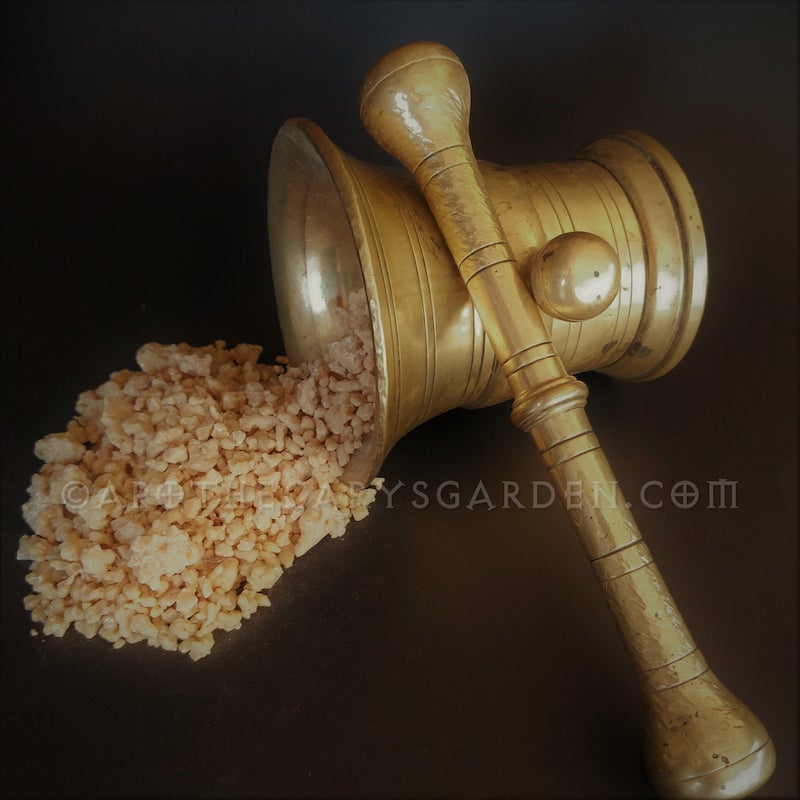
How to make a Frankincense Resin Extract with Boswellic acids
by Dan Riegler February 13, 2025 5 min read
The resin portion of Frankincense contains very valuable therapeutic compounds called Boswellic acids. You won't find them in the water-soluble gum, and you will not find them in the essential oil of Frankincense. We cannot use these resin acids to their fullest extent until we liberate the resin from the gum portion.
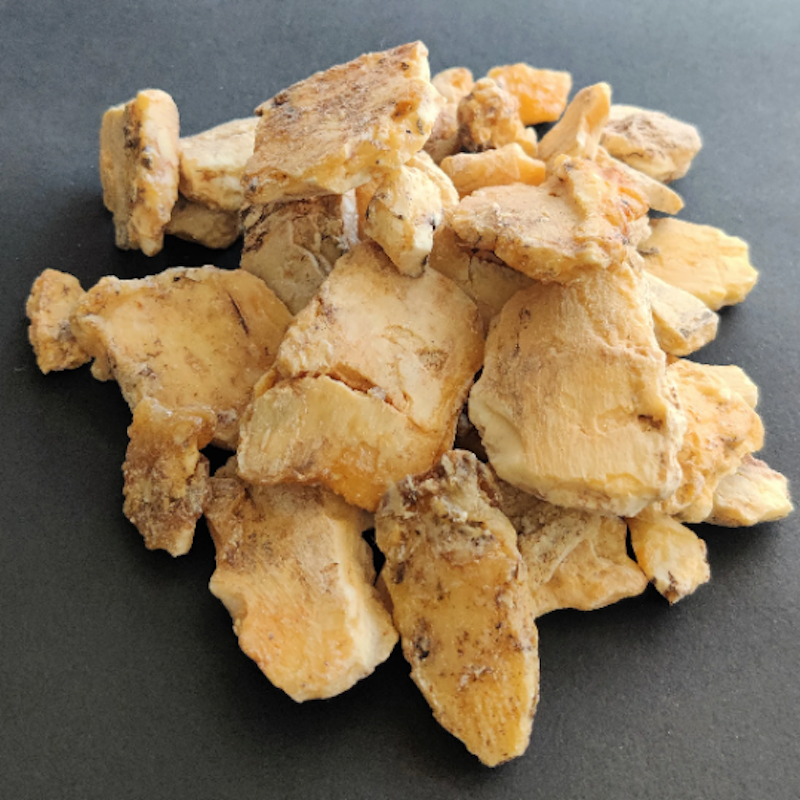
Sumatrana Benzoin-A New sustainable resin for Medicine, Incense and perfume
by Dan Riegler February 05, 2025 5 min read
Sumatrana Benzoin is harvested sustainably by farmer families in a small area of Northern Sumatra. This resin is unique in that it has floral notes other Benzoin types Lack. It has only recently been introduced to the Western market for use in perfume, medicine, incense and cosmetics.
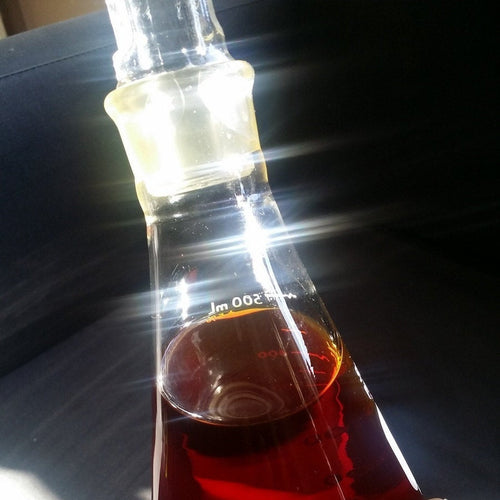
How to make a Medicinal Tincture of Frankincense
by Dan Riegler January 23, 2025 5 min read
There are several ways we can benefit from the anti-inflammatory and anti-cancer resin compounds found in Frankincense resin. A tincture is one of them and an easy product to make at home.
Recent Articles
-
How to make a Frankincense Resin Extract with Boswellic acids
February 13, 2025
-
Sumatrana Benzoin-A New sustainable resin for Medicine, Incense and perfume
February 05, 2025
-
How to make a Medicinal Tincture of Frankincense
January 23, 2025
-
Frankincense as Medicine-Truth, Myth, and Misinformation
January 15, 2025
-
Sustainable Frankincense from the Samburu women of Kenya
December 04, 2024
-
How to make a Tincture of Myrrh for oral health
November 27, 2024
-
Green Frankincense Demystified
October 04, 2024
-
How to make an oil extract of Frankincense-2 methods
January 17, 2024
-
Suhul Myrrh-A gift from the trees
January 03, 2024
-
How to prepare Winter Medicine with local Tree Resins
December 14, 2023
Categories
- Akba
- Ambergris
- Animal Welfare
- Animalics
- Anti-inflammatory
- Aphrodisiacs
- Aphrodite
- Apothecary Arts
- BA
- Benzoin
- Boswellia
- Boswellia Carterii
- Boswellia Frereana
- Boswellia Neglecta
- Boswellic Acids
- Boswellis Serrata
- burn incense
- cancer
- Censer
- Chest Rub
- Commiphora
- Commiphora Myrrha
- Copal
- Cough Balm
- DIY
- DIY Frankincense extract
- Fair trade
- ferula
- Frankincense
- Frankincense Absolute
- Frankincense as medicine
- Frankincense Extract
- Frankincense Neglecta
- Frankincense Sacra
- Frankincense Tincture
- Frankincense tutorial
- Incense
- Incense burners
- Incense Making
- Incense Resins
- kenya
- Medicated oils
- Medicine chest
- Muscle Rub
- Musks
- Myrrh
- Myrrh tincture
- new
- Perfume
- Perfume Ingredients
- Perfume Making
- Perfumery
- Pine
- Pine Resin
- Resin extract
- Royal Green Hojari
- Sacred Copal
- Samburu
- Spruce Resin
- Suhul Myrrh
- Sultans Select
- Sumatrana Benzoin
- Sustainability
- Sustainable Frankincense
- Sustainable Harvest
- tincture
- Traditional Medicine
- Tree Medicine
- Tree Resins
- Tutorials
- Wildcrafting
- Wood finishes
Where are you Blog posts Dan?
Please bear with me as I rewrite, update and link my old Blog posts to the new shop. If you don't see the tutorial or post you are looking for, pop in periodically. I should have them all up, updated and running in the next few weeks.
Subscribe
Sign up to get the latest on sales, new releases and more …
- Comments
- DISQUS
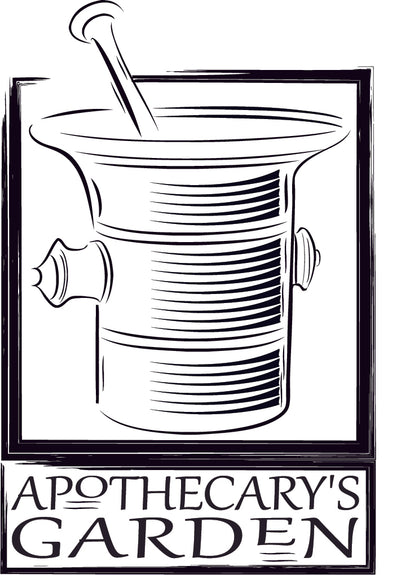
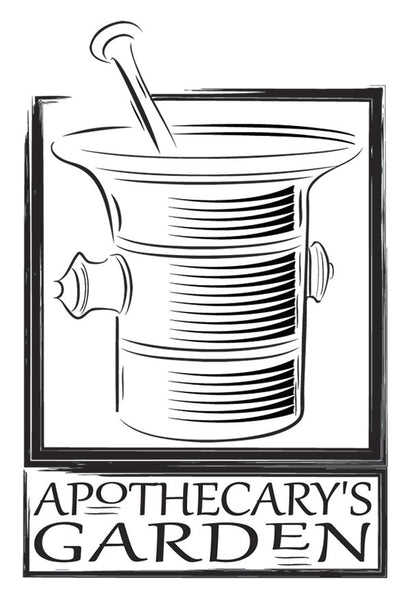





Zach
December 07, 2023
Wow once again!
What a treat to have these posts updated. I was not aware the the Socotra resins where on the rarer side- (my first sample of Myrrh was from there, and unfortunately it is to this day one of the most incredible Myrrh resins I’ve ever smelled or seen)
Anyways, thank you again Dan!
I cannot wait for some of the tutorial blogs to be reposted. I still watch the YouTube videos but, when you’ve got multiple double boilers with different batches and preparations going on, having it all in front of you in an easy to read text format is invaluable :)